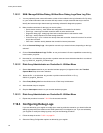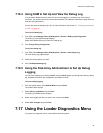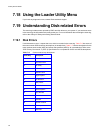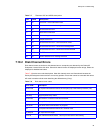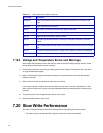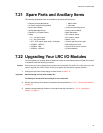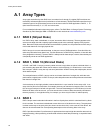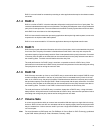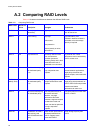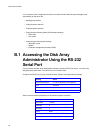
Array Basics
89
Appendix A
Array Basics
Galaxy 65 RAID controllers let you set up and manage disk arrays. A disk array (array) is a group of disks
that appears to the system as a single virtual disk. This is accomplished through software resident in the
RAID controller. RAID (Redundant Array of Independent Disks) refers to disk arrays in which part of the
array storage capacity may be used to store redundant information. The redundant information lets you
restore user data if a disk in the array fails.
The host system views the Galaxy 65 Subsystem as a single FC disk drive. It is actually an array of
physical disks behind a RAID controller. The Galaxy 65 Subsystem is managed by software to appear as
a single, very large physical disk. Depending on the array type, the virtual disk has advantages in fault-
tolerance, cost, performance, or a combination of these. This section explains the different array types
and the disk requirements for each type.
Tip: Choosing the right RAID level for your needs will improve performance. The following are examples
of storage needs and appropriate RAID level. Rorke Data RAID controllers also provide methods of
tracking statistical data to aid in the process.
Table 1–1 shows some example applications and RAID levels.
.
Table 1–1
Example applications and RAID levels
Application RAID level
Testing multiple operating systems or software development (where redundancy
is not an issue)
Volume
Fast temporary storage or scratch disks for graphics, page layout, and image
rendering
RAID 0
Workgroup servers RAID 1, 10
Video editing and production RAID 3 or 4
Network operating system, databases, high availability applications, workgroup
servers
RAID 5
Very large databases, Web server, video on demand RAID 50




